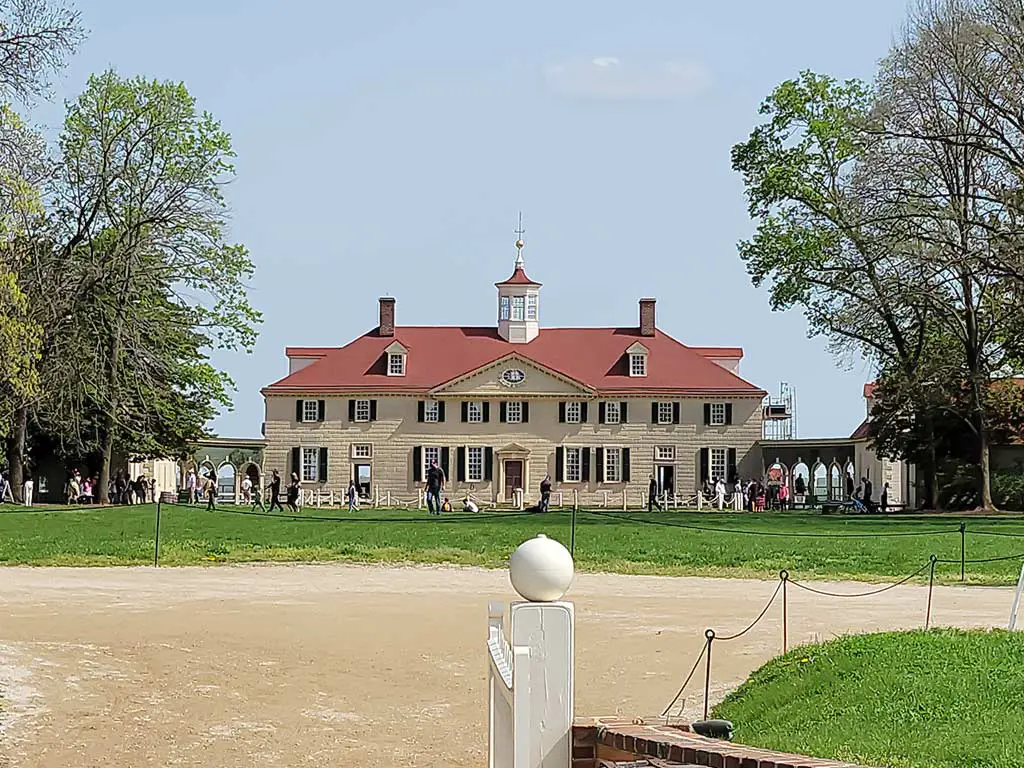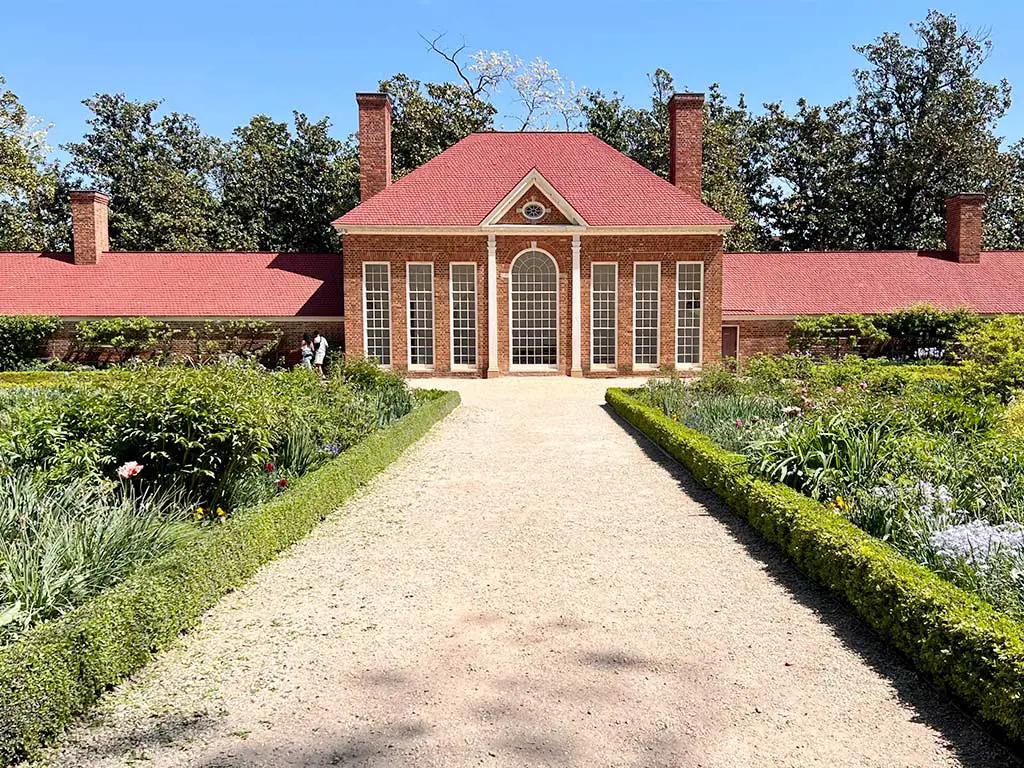Step back in time and immerse yourself in the rich history of Mount Vernon, just outside Washington DC.
This iconic estate holds a significant place in American history as the cherished home of George Washington and his wife, Martha.
Explore the grand Mansion where the first president resided, stroll through the working farm, and delve into the stories of the enslaved individuals who lived and worked on the estate.
George Washington’s vision for Mount Vernon came to life through a major expansion in the late 1750s, transforming the original one-story house into a grand residence with a full second story and a third-floor garret.
Despite his absence during the French and Indian War, the construction was expertly overseen by trusted individuals, with the majority of the labor carried out by Washington’s enslaved workforce. This historical site stands as a testament to the resilience and complexity of America’s past.
Immerse yourself in the legacy of Mount Vernon, where history comes alive, offering a glimpse into the life and times of one of America’s founding fathers.
Historical Overview of Mount Vernon

Mount Vernon stands as an iconic symbol of American history, intimately linked with the life and legacy of George Washington, the first President of the United States.
Here’s a historical overview of Mount Vernon:
Early Beginnings and Original Land Grant
George Washington’s prestigious estate, Mount Vernon, holds a rich history that dates back to the original land grant from Lord Thomas Fairfax during the early 18th century.
This land, initially known as Little Hunting Creek Plantation, was acquired by Washington in 1739. The estate’s transformation began in the late 1750s when Washington initiated the first significant expansion of the original one-story house with a garret.
Through the supervision of William Fairfax of Belvoir, Humphrey Knight, and John Patterson, the mansion was elevated to a full second story with a third-floor garret, changing the landscape of Mount Vernon.
The Washington Family and Their Legacy
Mount Vernon stands not just as a historical landmark but as a testament to the Washington family’s enduring legacy.
The estate served as the cherished home of George and Martha Washington, offering a glimpse into their lives and the era of America’s founding fathers.
Washington’s enslaved labor force played a crucial role in the estate’s development, with the majority of the work for the mansion’s expansion carried out by these individuals.
The immersive experience provided at Mount Vernon allows visitors to delve into the intricate history of one of the most iconic figures in American history.
Architectural Evolution

The architectural evolution of Mount Vernon reflects both the personal tastes of George Washington and the broader architectural trends of his time.
Here’s an overview of its architectural evolution:
The Main Mansion and Its Expansions
At Mount Vernon, the architectural evolution of the main mansion reflects a blend of classical styles that evolved over time.
The doorcases, moldings, and plasterwork within the mansion exhibit a range of influences, from Palladianism to later neoclassical styles reminiscent of Robert Adam. This varied classical style is exemplified in the doorcases of the principal rooms.
For instance, the West Parlour and Small Dining rooms feature doorcases with ionic columns and full pediments, while the hall and passageways boast doors with broken pediments supported by an architrave.
Gardens and Grounds Layout
The interiors of many rooms at Mount Vernon are adorned with painted paneling and ceilings embellished with plasterwork in a Neoclassical style.
The credit for much of this intricate plasterwork goes to the English craftsman, John Rawlins, who brought with him interior design motifs from London in 1771.
The architectural features of Mount Vernon, with their varying classical influences, create a unique blend of styles that add to the richness of the estate’s historical significance.
Mount Vernon’s architectural features, influenced by varying classical styles, contribute to the estate’s historical significance.
John Rawlins, an English craftsman, played a significant role in creating intricate plasterwork with design motifs from London in 1771.
Daily Life at Mount Vernon

Understand the daily routine and activities that shaped the lives of those living and working at Mount Vernon, offering a glimpse into the historical significance of the estate.
Agricultural Practices and Innovations
Discover the agricultural ingenuity that thrived at Mount Vernon, from managing livestock to cultivating gardens and preserving food.
The estate’s agricultural practices were pivotal to sustaining daily life and contributing to the local economy.
Explore how Mount Vernon in Washington DC’s history showcases innovative agricultural practices, including livestock management, garden cultivation, and food preservation. These practices were crucial for daily life and the local economy.
Slave Life and Emancipation
Explore the hardships and resilience of the enslaved individuals who toiled at Mount Vernon. Despite the challenging circumstances, their contributions were essential to the functioning of the estate.
Learn about George Washington’s unique position as a slave owner who eventually freed some of his enslaved workers, leaving a complex legacy tied to the history of Mount Vernon.
Discover the intricate stories of the enslaved people at Mount Vernon, shedding light on their struggles and triumphs.
Delve into George Washington’s journey as a slave owner who made the significant decision to emancipate some of his enslaved laborers, shaping a nuanced legacy intertwined with Mount Vernon’s history.
Preservation and Legacy

Preservation and legacy intertwine at Mount Vernon, where efforts to protect its historical significance ensure that George Washington’s legacy endures for future generations.
Here’s how preservation and legacy intersect at this iconic site:
Role of the Mount Vernon Ladies’ Association
The Mount Vernon Ladies’ Association, through the concerted efforts of countless American citizens, played a pivotal role in preserving Mount Vernon and its 500 acres.
Notable figures such as Henry Ford and Thomas Edison supported this initiative, recognizing the historical importance of Mount Vernon and contributing to its conservation.
During the Civil War, when the estate faced potential destruction, it was declared neutral ground, remaining accessible to the public and intact.
The Association continues its dedicated work to safeguard the integrity of Mount Vernon and share its compelling stories with visitors.
Modern Conservation Efforts
Today, modern conservation efforts at Mount Vernon focus on maintaining and protecting this historic estate for future generations.
The Association has implemented innovative strategies to preserve the architectural integrity of the mansion and its surrounding grounds.
With a commitment to sustainability and historic preservation, Mount Vernon incorporates the latest conservation practices to ensure the longevity of this national treasure.
By leveraging advanced technologies and expertise in heritage conservation, Mount Vernon continues to be a beacon of historical significance in Washington DC.
Visiting Mount Vernon

Visiting Mount Vernon offers an incredible journey through American history, particularly the life and legacy of George Washington.
Here are some tips and highlights for your trip:
Tours and Educational Programs
When you visit Mount Vernon, you can take advantage of various tours and educational programs that offer unique insights into the rich history of this iconic estate.
The estate provides guided tours led by knowledgeable historians who delve into the fascinating stories behind each building and artifact.
These tours allow you to explore different aspects of George Washington’s life and legacy, gaining a deeper understanding of the historical significance of Mount Vernon.
Additionally, Mount Vernon offers educational programs tailored to various age groups, from school children to adults.
These programs cover diverse topics related to American history, agriculture, and the life of George Washington.
You can participate in interactive workshops, engaging lectures, and hands-on activities that bring history to life in a vivid and immersive way.
Frequently Asked Questions
Who oversaw the architectural development of Mount Vernon?
The architectural development of Mount Vernon was overseen by key figures like George Washington, William Thornton, and Benjamin Latrobe.
What is highlighted regarding daily life at Mount Vernon in the article?
The article delves into daily life at Mount Vernon, focusing on agricultural practices and the resilience of the enslaved individuals who played a crucial role in maintaining the estate.
How is the Mount Vernon Ladies’ Association involved in preserving the estate?
The Mount Vernon Ladies’ Association has been pivotal in preserving the estate since 1853, ensuring its upkeep and historical significance for future generations.
Who supports the conservation efforts at Mount Vernon?
Notable figures like Henry Ford and Thomas Edison have supported the conservation efforts at Mount Vernon to maintain its architectural integrity and historical importance.
What educational programs are offered at Mount Vernon?
Mount Vernon offers tours and educational programs led by knowledgeable historians, covering topics in American history, agriculture, and the life of George Washington for visitors of all ages.
Conclusion
Exploring Mount Vernon’s rich history unveils a captivating narrative of George Washington’s estate, shedding light on its evolution from plantation to historical landmark.
The article’s detailed account showcases the estate’s significance, emphasizing the contributions of Washington’s enslaved workforce and the preservation efforts led by the Mount Vernon Ladies’ Association.
Engaging tours and educational programs offer a deeper understanding of Washington’s legacy and American history, making Mount Vernon a must-visit destination for history enthusiasts of all ages.
As conservation efforts continue to safeguard its heritage, Mount Vernon stands as a timeless tribute to George Washington’s enduring influence on the nation’s history.




Allison Brice